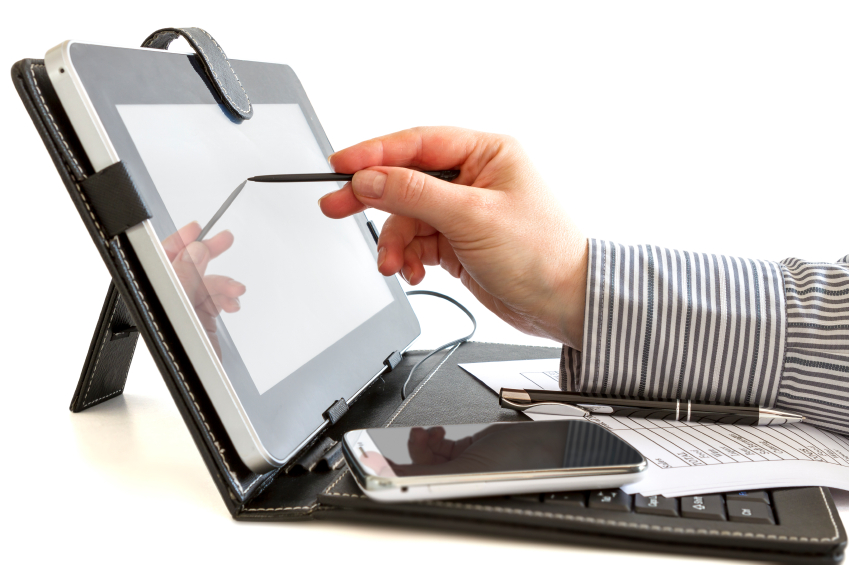More and more employees are using mobile devices to accomplish their job tasks. That opens up a new need for training. Today’s Advisor gives you expert ergonomic tips for using mobile devices safely.
 |
Use of tablets is skyrocketing, with more than a billion people expected to use them in 2015. Are there risks associated with these handy digital devices? Yes, according to a recently published article in the journal Ergonomics.
Past research has identified a link between increased forward bending of the head and neck (flexion) and pain. The authors tested university students who use tablets 50 percent of their time. X-rays and joint measurements were taken to assess gravitational demand on the neck and ergonomics of the head-neck system.
Researchers found that using tablets increases mechanical demand on the neck muscles 3–5 times more than a neutral position (with head and neck unbent). Using a tablet flat on the lap also had this effect, as compared with using it propped up. Whether the individual was reading or typing had little effect on the level of neck strain.
According to California State Fund Ergonomist Helen Chandler, the big issue when using a tablet is how the device is held. The nondominant hand must hold the device while the dominant hand touches the screen. Even though tablets are quite light, holding one in a fixed position for a long period of time without support can lead to discomfort.
Interactive. Convenient. Thumb-Friendly. TrainingToday’s course library is now mobile-ready. Start your free trial now!
Train employees to consider these 7 tips for reducing risk.
1. Don’t buy a larger screen than necessary. Smaller, lighter models that are easier to hold may be all you need and can mean less risk.
2. Consider an adjustable stand if you use the tablet for reading.
3. If you type a lot on the device, purchase an external keyboard; wireless Bluetooth® keyboards are compatible with many models.
4. When using a tablet in the field, use a case with a strap in order to reduce the need to hold the tablet as you move about.
5. Make sure the brightness is properly adjusted.
6. Purchase a stylus that features a larger grip. This reduces the risk of tight, pinched fingers.
7. Take regular, quick breaks to give your eyes, hands, and neck a rest.
Train on demand with our now mobile-friendly courses. Monitor and track results with the built-in recordkeeping tool. Find out more.
In tomorrow’s Advisor, we’ll give several examples of how companies are using mobile devices for training.
